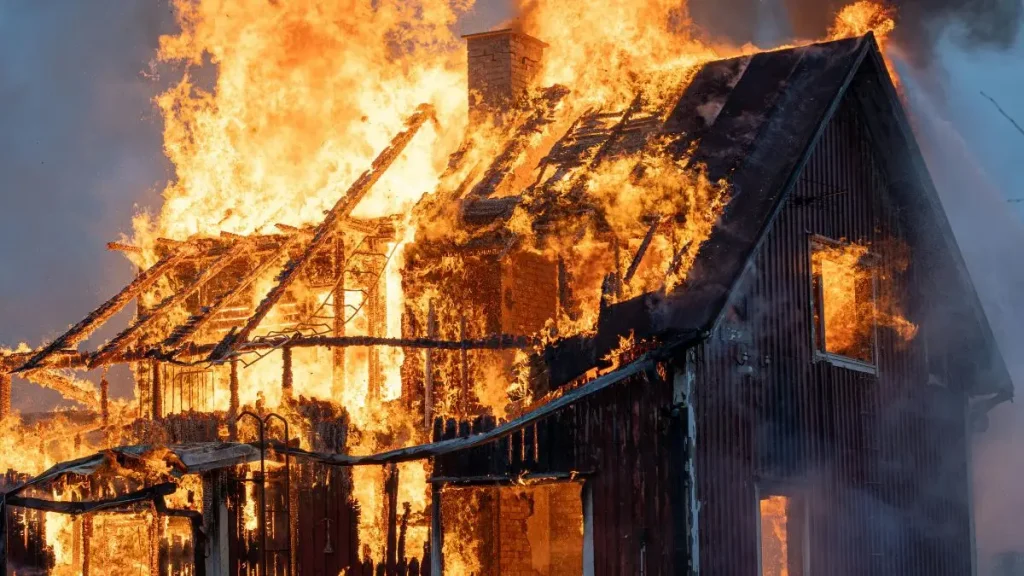York County Man and Woman Die in House Fire, Investigation Ongoing
I’ll walk you through exactly what happened—without fluff.
Early Sunday morning, around 6:00 a.m., fire crews were called to a home on North Main Street in Stewartstown, York County. It wasn’t just smoke and flames. When firefighters from Eureka Volunteer Fire Department got there, the fire was already intense. They found two people unconscious inside the building.
Both victims were pulled out as fast as possible. CPR and emergency care were given right there on scene. But despite everything, they didn’t make it. The York County Coroner’s Office confirmed the man and woman were pronounced dead at Well Span York Hospital just after 7 a.m.
The building where it happened isn’t just any house—it has history. It was built back in 1905 as a bank. Later, it became a public library. Now, it’s a home. That kind of structure often means more complex layouts, older materials, and in many cases—hidden fire risks most people don’t think about.
This wasn’t a fast-burning trailer or a modern apartment. This was an old, iconic Main Street building turned deadly in minutes.
Have you ever lived in or near a historic home? What fire safety steps do you take differently because of it? Let me know below.
Fire Response and Rescue Attempt
When I first read what firefighters were up against that morning, it really hit me.
According to ABC27, the Eureka Volunteer Fire Department arrived to find flames already ripping through the building. And not just a light smoke situation—it was fully involved.
They didn’t wait. Crews rushed inside and pulled the man and woman out, both unconscious. Life-saving efforts started immediately. CPR, oxygen, everything they had. You could feel how urgent it was, even reading the report after the fact.
But even with that kind of fast response, they couldn’t be saved.
You need to understand—fires in older structures move fast and behave differently. Rescue teams often face pitch-black visibility, uneven floors, and no time for second guesses. These crews put their lives on the line in conditions most of us would panic in.
It reminded me of another incident where California firefighters battled a second house fire in the same day—showing how relentless these crews have to be under pressure.
Victims Identified and Confirmed Dead at Hospital
The WGAL report confirmed something many of us hoped wouldn’t be true: both victims didn’t survive.
The man, 54, and the woman, 41, were taken to Well Span York Hospital right after the rescue. Sadly, the coroner says they were pronounced dead at 7:12 a.m. and 7:30 a.m.
That timeline matters. It shows you how quickly a fire like this can go from dangerous to irreversible. Minutes count. And in this case, there just weren’t enough of them.
You might be wondering who they were. As of now, their names haven’t been officially released, but the next of kin have been notified. These were real people. Not just “victims” in a headline.
If you live in a home like this, or even near one, don’t wait until it’s too late to think about your own safety plan.
Injured Firefighter and Risk to Emergency Crews

This part doesn’t always make the headlines—but it should.
One firefighter was injured during the rescue. Authorities say they fell through a hole in the second floor. Think about that for a second. You’re running into a burning structure, trying to save lives, and the floor collapses under you.
It’s a nightmare scenario. And yet, they keep doing it—call after call.
If you’ve ever taken firefighters for granted, stories like this should be a wake-up call. These aren’t just professionals. They’re risking everything in split-second decisions to pull people they’ve never met out of fire and smoke.
And it’s not just about honoring them—it’s about realizing how fragile that line is between being rescued and not making it out.
The Building’s Unique History and Community Connection
I want to pause here because this wasn’t just some random rowhome. This building had roots.
According to Fire Chief Todd Bigney, the structure started out as a bank in 1905. It later became Stewartstown’s library, and only in recent years was it turned into a private home.
You know what that tells me? It was more than just a house. It was part of Stewartstown’s story.
One neighbor, Dana Tomcanin, told ABC27 she woke up to the sound of sirens and remembered the building’s past. “It’s been a fixture on Main Street in Stewartstown for quite a while,” she said.
I’ve seen a lot of fire reports, but very few talk about the place itself. They miss the history. The emotional layer. But when something like this burns, a part of the town’s memory goes with it.
If you’ve walked down Main Street, you’ve probably passed this place. And now, it’ll never look the same again.
Unclear causes are unfortunately common—like the Wisconsin house fire that left one injured while the cause remained under investigation.
Eyewitness Reaction: The Morning Stewartstown Woke Up to Sirens
I want you to imagine what it feels like to be woken up by one fire whistle. Then another. Then another. That’s exactly what Dana Tomcanin described.
She told that she could tell something serious was happening. “In my mind, it was, okay, something’s burning,” she said.
It’s not just what you hear—it’s what you feel in that moment. The helplessness. The worry about who might be inside. That low, sinking gut feeling that it’s not going to end well.
If you’ve ever lived in a small town, you know that fires aren’t just incidents. They’re personal. They bring the community outside, to the sidewalks, to social media, to prayer chains.
And when it’s a place as familiar as this old corner building? That grief spreads fast.
What would you have done if this fire broke out in your neighborhood? Drop your thoughts below—real stories can help others stay alert too.
Ongoing Investigation Into the Fire’s Cause

Here’s the part that’s still a question mark—and probably will be for a while.
At the time of writing, investigators haven’t confirmed what caused the fire. There’s been no official word on whether it started from electrical issues, heating systems, or something else entirely.
And honestly, when you’re dealing with a 100+ year-old building, there are a lot of possibilities. Old wiring. Outdated insulation. Maybe even structural problems from past renovations. It takes time to sort through all of that.
But what I can tell you is this: the authorities are treating it seriously. Fire marshals, the coroner’s office, and local law enforcement are all involved. That kind of coordinated response usually means they’re being thorough.
If you’re like me, you probably want to know why. Why this happened. And if it could’ve been prevented. Until more info is released, all we can do is wait—and keep asking the right questions.
Some fires take hours to control, especially in complex structures—just like the Mukwonago home fire that needed a four-hour operation to contain.
Fire Safety Lessons for Older Homes
This is where I want to shift gears for a second—because there’s something you and I can take away from all this.
Old homes are charming. They’ve got character. But they also come with risks we sometimes overlook. If you live in a house that’s more than 30 or 40 years old, here are a few things I’d seriously suggest you double-check:
- Electrical wiring — Is it up to code? Was it ever replaced?
- Smoke detectors — Are they working in every room, and less than 10 years old?
- Escape routes — Do you and your family actually know what to do if a fire starts while you’re asleep?
You don’t need a fire marshal to tell you how valuable 30 seconds can be in a fire. Sometimes, that’s the difference between a close call and a tragedy.
And here’s something else worth knowing—on our WhatsApp channel, homeowners have been sharing real stories and safety tips that go beyond the usual checklists. Sometimes, learning from others’ close calls is the most effective wake-up call.
Ways to Support the Victims’ Families or Fire Department
In situations like this, it’s natural to feel helpless. But you’re not.
If donation links or GoFundMe pages are created for the families or the injured firefighter, I’ll update this section with verified links. These things usually take a couple of days to come together publicly.
Until then, if you want to do something, supporting your local fire department is a solid place to start. Stewartstown Community Fire Company is volunteer-run—and trust me, departments like this run on more than just water. They need gear, funding, and community backing to keep doing what they do.
Even a small donation or a note of thanks makes a difference. Especially after a call like this one.
For more reports on recent house fires and safety lessons across the U.S., visit Build Like New’s Home Incidents category.
Disclaimer: Details in this article are based on publicly available reports at the time of writing. Information may change as the investigation continues. Always refer to official sources for the latest updates.


